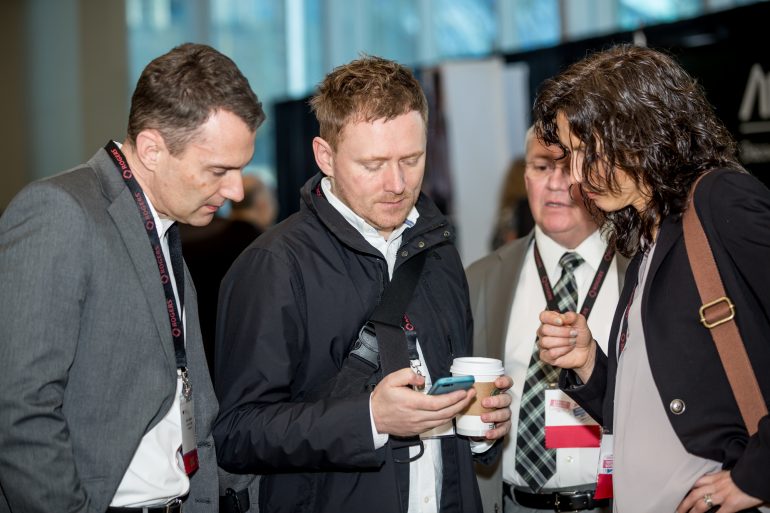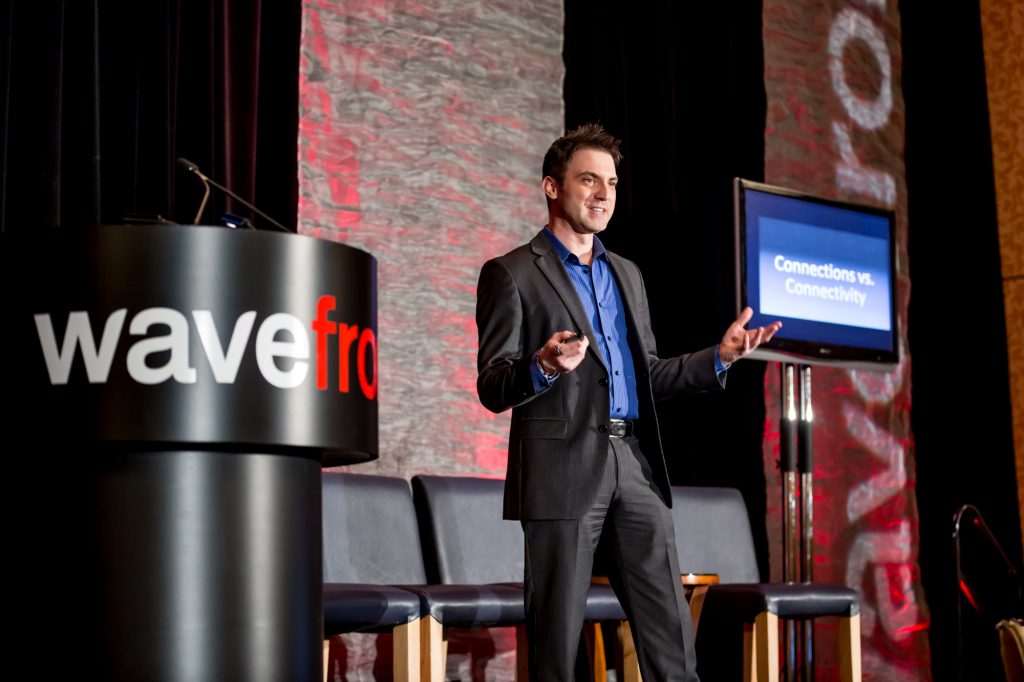Reality is not universal. Mix one man’s factual with another’s fictional, and somewhere in that ether is another person’s reality of the moment.
When Marc Andreessen penned “Why Software Is Eating The World” in 2011, he shared a vision of machines or devices. Contrast Andreessen’s reality with the dystopian world envisioned by James Cameron in 2003’s Terminator 3: Rise of the Machines, where a lot of stuff blew up. Here, man’s conflict with machine also serves as a cautionary tale.
For some people, the reality of this moment is found interacting with connected devices, or machines talking to machines. The internet is more than navigating web pages now: it’s a world of connected things. Bing’s Sr. Product Manager Duane Forrester sees this as a world of “using knowledge to empower objects – THAT is the internet of things.”
Forrester was one of many great speakers at the recent Wavefront Wireless Summit held in Vancouver. The event was three days of talk and thoughts about what is, and what could be. With over 500 attendees, a line-up of international thought leaders, and global business partners the event was true to it’s theme of “driving business transformation with wireless and mobility solutions.”
With two discussion tracks and so much content delivered it’s impossible to review every topic, conversation, and speaker. It’s also tough picking favourites. But on the heels of this year’s CES event that highlighted wearable technology, the connected home and vehicle, there was no shortage of “cool” consumer enabling technology discussion.
However, there was also serious conversations about significant issues relating to health care, transportation, energy, and agriculture. The entrepreneurs casting a lens beyond our first world problems, by taking a global perspective have enormous opportunities in front of them. There’s a huge part of the world that will never communicate through a strand of copper.
From Kenya, a Skype conversation with Jesse Moore, Managing Director at M-Kopa, illustrated this world of opportunity. Moore shared how machine-to-machine technology (M2M), mPayments and “old school” feature phones have lit up Kenya. While most of us take bank accounts and electricity for granted, that’s just not the case in much of the developing world.
Meanwhile, Gary Atkinson’s presentation challenged everyone to ponder the question, “Can Technology Save us from Ourselves?” Atkinson, the director of emerging technologies at Cambridge, UK’s ARM, offered that if technology is cheap enough, low-power enough and small enough, we need to better deploy it to solve big challenges. Atkinson is looking at how “little data” from sensors can help us make better decisions to improve crop yields, to detecting leaky water infrastructure, to better protecting people with chronic diseases.
We talked about how the use of technology can help better feed our world. He pointed out “we can barely feed and water ourselves today, and there will be two billion more people on the planet by 2050. We need to be able to scale up and increase the yields. Increasing the yields requires us to make better decisions, and be more intelligent about how we grow food on a hectare of land. To be more intelligent we need more measurement. We need a more granular understanding of one plot of land, not a general overview of 10,000 hectares. A couple of areas where technology will help, and precision agriculture and drip irrigation.”
In spite of having the technological potential, we still haven’t gotten to the point where end devices, that can sense, monitor, and communicate are cheap enough or are durable enough to last ten plus years. For many of the world’s farming operation, this technology is not yet economically worthwhile.
Silicon isn’t the constraint, being able to cheaply communicate data is. Atkinson said “we’re trying to use technology that was developed for humans to talk with humans. But, machines don’t need to be concerned about the whole availability of a network. This is where the design goals for Weightless SIG is about taking out everything that humans need (such as latency dependence, immediately available, relatively high bandwidth, clarity and cell-to-cell roaming). It’s about reducing base station and operational costs, as sensor technology for this type of application doesn’t need to be run on current cellular technology.”
It’s an interesting case of removing human-centred design considerations from the machine, and it will actually facilitate better human related outcomes. By creating a “dumber” network, and decreasing sensor costs by increasing the scale of adoption, the potential to better feed ourselves is an opportunity right in front us.




